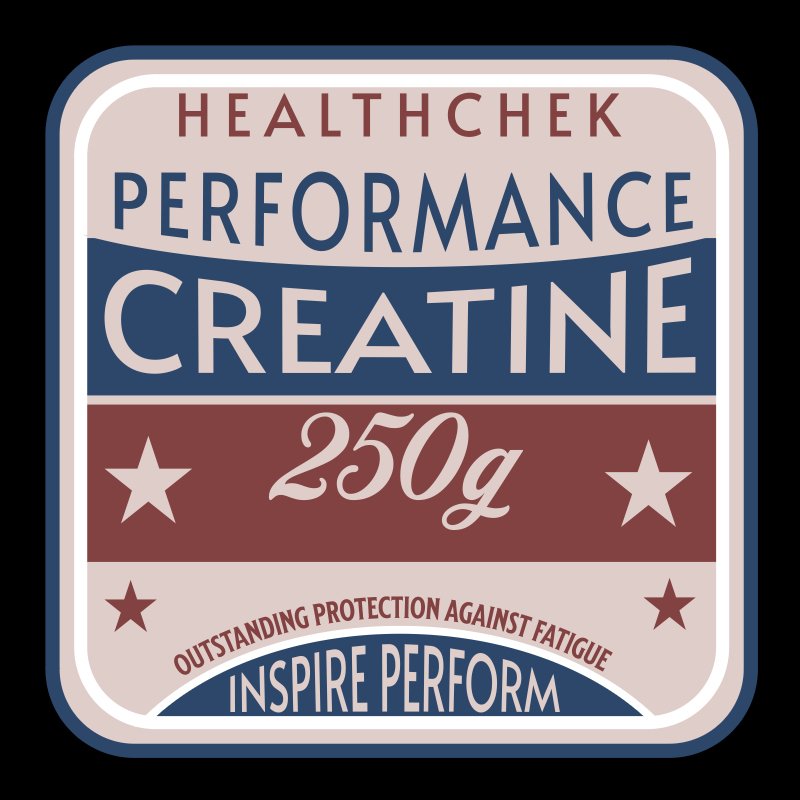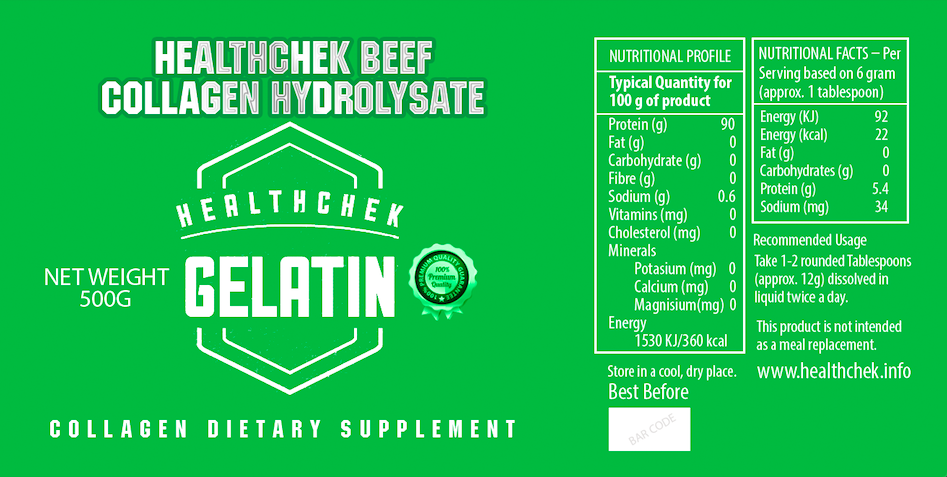 Image 1 of
Image 1 of


Creatine Monohydrate Powder (250g-500g-1kg)
Creatine Monohydrate stands out as one of the most widely used and extensively researched sports supplements globally. It is known to enhance physical performance during brief, high-intensity exercise intervals, contributing to improved power and strength.
While creatine is naturally present in various meat sources, achieving optimal levels through diet alone can be challenging. This is why we offer Creatine Monohydrate Powder, providing a convenient and efficient means to reap the benefits of creatine without any hassle. This product is particularly advantageous for individuals engaged in intense exercise, seeking to elevate their overall performance.
Our Creatine Monohydrate is meticulously micronised to a 200-mesh particle size, ensuring seamless mixing and rapid absorption.
Key Benefits of Creatine Powder:
Enhances physical performance during successive bursts of short-term, high-intensity exercise.
Recognized as a highly researched sports supplement within the industry.
Creatine Monohydrate stands out as one of the most widely used and extensively researched sports supplements globally. It is known to enhance physical performance during brief, high-intensity exercise intervals, contributing to improved power and strength.
While creatine is naturally present in various meat sources, achieving optimal levels through diet alone can be challenging. This is why we offer Creatine Monohydrate Powder, providing a convenient and efficient means to reap the benefits of creatine without any hassle. This product is particularly advantageous for individuals engaged in intense exercise, seeking to elevate their overall performance.
Our Creatine Monohydrate is meticulously micronised to a 200-mesh particle size, ensuring seamless mixing and rapid absorption.
Key Benefits of Creatine Powder:
Enhances physical performance during successive bursts of short-term, high-intensity exercise.
Recognized as a highly researched sports supplement within the industry.
Creatine Monohydrate stands out as one of the most widely used and extensively researched sports supplements globally. It is known to enhance physical performance during brief, high-intensity exercise intervals, contributing to improved power and strength.
While creatine is naturally present in various meat sources, achieving optimal levels through diet alone can be challenging. This is why we offer Creatine Monohydrate Powder, providing a convenient and efficient means to reap the benefits of creatine without any hassle. This product is particularly advantageous for individuals engaged in intense exercise, seeking to elevate their overall performance.
Our Creatine Monohydrate is meticulously micronised to a 200-mesh particle size, ensuring seamless mixing and rapid absorption.
Key Benefits of Creatine Powder:
Enhances physical performance during successive bursts of short-term, high-intensity exercise.
Recognized as a highly researched sports supplement within the industry.
Derived from the Greek word "kreas," meaning "meat," creatine is a molecule synthesised within the body through the combination of amino acids arginine, glycine, and methionine. Primarily produced in the liver, with lesser contributions from the kidneys and pancreas, creatine serves as a reservoir for high-energy phosphate groups in the form of phosphocreatine. These phosphate groups play a crucial role in replenishing adenosine diphosphate (ADP) to adenosine triphosphate (ATP), the primary energy carrier in the body. Creatine's significance in energy production becomes particularly pronounced in situations of heightened energy demand, such as during intense physical or mental activities.
Creatine is a nitrogenous organic acid that occurs naturally in vertebrates and helps supply energy to cells, particularly muscles. It plays a crucial role in the phosphagen system, also known as the Creatine Phosphate (CP) or phosphocreatine system, which is one of the energy systems used by the body to produce adenosine triphosphate (ATP) during short bursts of intense physical activity.
Here's how creatine functions in the Creatine Phosphate energy system:
Formation of Creatine Phosphate (CP): Creatine is stored in muscles in the form of creatine phosphate or phosphocreatine. This process involves the phosphorylation of creatine, where a phosphate group is added to creatine to form creatine phosphate. This reaction is catalyzed by the enzyme creatine kinase.
ATP Regeneration: During high-intensity activities, such as lifting heavy weights or sprinting, the muscles rapidly consume ATP for energy. When ATP is used, it loses a phosphate group and becomes adenosine diphosphate (ADP). The Creatine Phosphate system comes into play here. Creatine phosphate readily donates its phosphate group to ADP, converting it back into ATP.Creatine Phosphate (CP) + ADP → Creatine + ATPThis rapid regeneration of ATP allows the muscles to sustain short bursts of high-intensity activity.
Rapid Energy Supply: The Creatine Phosphate system provides a quick and immediate source of energy, but it is limited in duration. As the stores of creatine phosphate are depleted, other energy systems, such as glycolysis and oxidative phosphorylation, take over for longer-duration activities.
The use of creatine supplements is based on the idea of enhancing the Creatine Phosphate system's efficiency. By increasing the body's stores of creatine, individuals can potentially improve their capacity for high-intensity, short-duration activities. Creatine supplementation is common among athletes and fitness enthusiasts engaged in activities like weightlifting, sprinting, and high-intensity interval training, where the rapid replenishment of ATP is crucial.
It's important to note that while creatine is generally considered safe and well-tolerated, individuals should consult with healthcare professionals before starting any supplementation regimen, especially if they have pre-existing health conditions or concerns.
The duration of the bursts supported by the Creatine Phosphate (CP) system is relatively short, typically ranging from a few seconds to about 10-15 seconds. During this brief period, the CP system rapidly regenerates adenosine triphosphate (ATP) to provide energy for high-intensity activities such as sprinting, weightlifting, or short explosive efforts. In my kids sport, bike trials, a section has a two minute time limit, and within that the may have multiple parts that require intense explosive power.
The speed at which creatine phosphate regenerates ATP depends on several factors, including the individual's fitness level, the intensity of the activity, and the initial levels of creatine phosphate stores. However, in general, the replenishment of creatine phosphate occurs relatively quickly, especially during rest or low-intensity activities.
For both kids and adults, the regeneration time for creatine phosphate is typically on the order of minutes. Studies suggest that within the first minute of rest or low-intensity activity after a burst of high-intensity exercise, a significant portion of the creatine phosphate stores can be replenished. However, full restoration to baseline levels may take a bit longer, possibly up to several minutes. Watching the Elite riders such as Charlie Rolls and Adam Morewood, qualification to a UCI final means 6 riders of which they may be one. This means a maximum of 12 minutes for all riders to complete a section if they all use their time allowance. A rider may already have some depletion of the CP system from qualification, and if riders ahead of them fail earlier the time to replenish creatine phosphate shrinks.
It's important to note that children and adults may have some differences in their metabolic responses to exercise, in my opinion and from limited research they regenerate quicker, but the basic principles of energy system utilisation, including the Creatine Phosphate system, remain applicable across age groups. From my perspective, I want my athletes, and particularly my kids to maintain this "youthful" advantage. Additionally, individual variations in fitness, training status, and genetics can influence the specific dynamics of creatine phosphate regeneration.
While creatine is naturally present in some animal-based foods, it is most abundant in meat and fish. Athletes commonly incorporate creatine into their regimen, often consumed as a powder or in capsule form.
Creatine is extensively studied for its notable benefits, primarily centered around enhancing strength and power output during resistance exercise. This effect has been observed in various populations, including the general public and older adults. When combined with resistance training, creatine has shown potential to modestly increase lean mass. Trained athletes may also experience reductions in body fat and improvements in anaerobic exercise performance, strength, and power output.
While the research on creatine's impact on cognitive performance and mental health is not as extensive as that on physical performance, some promising findings have emerged. Creatine appears to mitigate mental fatigue, particularly in high-stress situations involving sleep deprivation or exhaustive exercise. Additionally, certain studies suggest potential benefits for memory, especially in individuals with lower creatine levels, such as vegetarians and older adults. Preliminary evidence also hints at the possibility that creatine could alleviate symptoms of depression in individuals with major depressive disorder or bipolar disorder.However, further research is essential to establish the effectiveness of creatine in these cognitive and mental health domains.
Creatine is notably present in significant quantities within skeletal and cardiac (heart) muscles. As a result, the primary dietary sources of creatine are meat and meat-based products. The following examples provide the uncooked creatine content per kilogram for various meats:
According to data from the NHANES III survey, the average daily creatine consumption from food sources for Americans aged 19-39 is approximately 1.1 g for men and 0.6 g for women. These findings underscore the significance of meat consumption in contributing to the overall creatine intake in the diet.
Creatine primarily exerts its effects through modulation of energy metabolism, particularly in relation to adenosine triphosphate (ATP), the essential cellular energy carrier crucial for high-intensity exercise. During energy utilization, ATP is converted into adenosine diphosphate (ADP) and adenosine monophosphate (AMP). Creatine resides in cells as creatine phosphate (or phosphocreatine), acting as a rapid energy donor by contributing a high-energy phosphate group to ADP, converting it back into ATP.
Supplementation with creatine enhances the overall pool of cellular phosphocreatine, expediting the conversion of ADP to ATP. This accelerates the restoration of cellular energy stores, leading to increased availability of energy. Consequently, this heightened energy availability promotes enhancements in strength and power output during physical activities. It's worth noting that the pro-energetic effects of creatine extend beyond skeletal muscle to impact virtually all body systems, including the central nervous system and the immune system.
For supplementation, creatine monohydrate can be introduced through a loading protocol. The loading phase involves taking 0.3 grams per kilogram of body weight per day for 5–7 days, followed by a maintenance phase of at least 0.03 g/kg/day for three weeks (if cycling) or indefinitely (without additional loading phases). For a person weighing 180 lbs (82 kg), this equates to 25 g/day during the loading phase and 2.5 g/day afterward. Many users, including myself opt for a 5 g/day dosage due to the affordability of creatine and the potential for increased benefits. Individuals with substantial muscle mass or high activity levels, or non-responders to the 5 g/day dose, may consider higher doses, even up to 10 g/day.
It's crucial to note that stomach cramping may occur if creatine is taken without sufficient water. To prevent diarrhea and nausea, creatine intake should be spread throughout the day and taken with meals when supplementing larger amounts.
As for the best form of creatine, while various forms have been studied, creatine monohydrate boasts the most extensive evidence supporting its efficacy, which is why I use it and stock it. Despite the availability of different formulations, there is no clear indication that one form significantly outperforms the others.
The timing of creatine supplementation for optimising training adaptations has been explored in a limited number of trials. One 10-week trial specifically investigated the effects of taking creatine, along with protein and carbohydrates, either before and after resistance training(close proximity to the workout) or in the morning and evening (further away from the workout). The study revealed that taking the supplement close to the workout resulted in greater improvements in lean mass, the cross-sectional area of type 2 muscle fibers, strength, and intramuscular creatine and glycogen stores compared to taking the supplement further away from the workout. This potential benefit of close-proximity creatine supplementation may be attributed to an upregulation of creatine transport secondary to muscle contraction.
A few trials have also examined the impact of creatine supplementation before versus after the workout. However, across these trials, no significant differences were observed between groups in terms of changes in body composition or strength.
In summary, the available evidence is limited, with only one trial specifically exploring the timing of creatine supplementation in relation to resistance training sessions. As a result, it remains uncertain whether there is an optimal time to supplement with creatine. However, the existing data suggest that, at the very least, there doesn't appear to be a significant difference in outcomes when comparing creatine intake before versus after resistance training sessions.
In an "average" healthy young man (and yes I know they don't exist) weighing 70 kg, approximately 14.6 mmol of creatinine, which is the urinary metabolite of creatine, is excreted daily. This individual has a creatine storage capacity of around 120 g. The daily loss of creatine is approximately 1.6%–1.7%, equivalent to around 2 g. This amount represents the daily requirement for creatine that must be obtained either from the diet or through supplementation to maintain adequate creatine levels.
It's worth noting that this daily creatine loss rate is typically about 20% lower in women and 45% lower in older adults due to lower levels of lean mass in these populations. Conversely, individuals with higher than normal levels of lean mass may have a higher daily creatine loss rate. Understanding these variations is crucial for tailoring creatine supplementation to meet the specific needs of different demographic groups.
UPDATE: Cramping with creatine use.
In the early 2000s, The American College of Sports Medicine advised individuals managing weight while engaging in intense exercise or in hot environments to avoid creatine supplementation. The suggested physiological concern was that creatine, an osmotically active substance primarily found in skeletal muscle, might lead to dehydration and muscle cramping by altering fluid distribution within the body, favoring intracellular water uptake and retention, especially in the short term.
During the initial creatine loading phase (20 g/day for 5-7 days), there could be a temporary 1-3 kg increase in body mass, primarily attributed to overall water retention. Anecdotal reports from some creatine users have described negative perceptions, including cramping and symptoms of dehydration. However, it's crucial to note that these studies did not adequately control for other supplements and often featured participants exceeding the recommended creatine maintenance dose of 5g/day.
Contrary to anecdotal reports, experimental and clinical evidence suggests otherwise. Athletes using creatine exhibited significantly fewer instances of cramping, heat illnesses, dehydration, muscle tightness, strains, and overall injuries compared to non-creatine users. In a separate study spanning 21 months, long-term creatine supplementation did not adversely affect health markers in athletes undergoing intense training, indicating its safety.
Moreover, creatine has demonstrated positive effects in clinical settings, such as with hemodialysis patients experiencing muscle cramps. Creatine monohydrate, known for enhancing muscle metabolism, was associated with a 60% reduction in symptomatic muscle cramps during treatment, with the effect disappearing during the washout period, reinforcing the notion that creatine can be a safe agent in such scenarios.
In summary, current experimental and clinical research does not support the idea that creatine supplementation leads to dehydration and muscle cramping.
My own thoughts would be that one needs to consider diet (are you getting creatine anyway), exercise/work (are you depleting the system with intense physical or mental work), and lifestyle (i.e. are you pretty well balanced in other aspects that help you maintain a good creatine balance)?
At my weight I should lose about 2 g per day, so 5 g is a fairly high dose, but I maintain a fairly intense physical lifestyle, even while injured I can be seen jumping like a ninja across rocks helping my kids in their sport.



